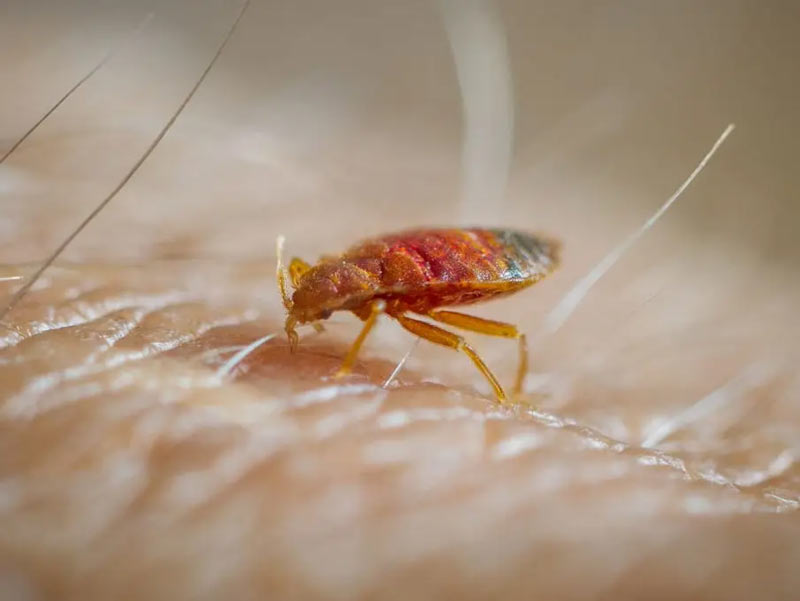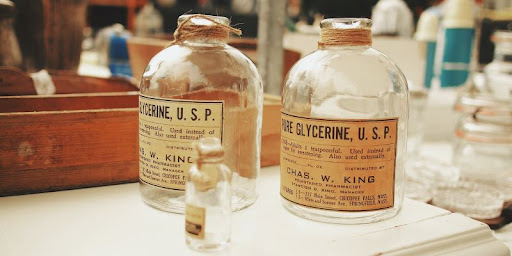When you wake up and find yourself with an itchy rash, is it from a flea bite or a bedbug bite? Figuring out what kind of pest bit you can be challenging - especially when both are common household problems.
We'll explore the differences between flea bites and bedbug bites so that you can accurately identify which type of bug caused your rash. We’ll cover details like size, color, location, symptoms, and treatment – giving you peace of mind knowing that you have the right information to protect your health.
Flea Bites & Symptoms

Flea bites are usually small in size and appear as reddish-brown spots. They’re often arranged in clusters or lines, a telltale of fleas. Itchy bumps may be present around the bite area, but they’re not always itchy right away - sometimes, it can take up to several days for any itching to occur. When looking at pictures online, you might find flea bites similar to mosquito bites or rashes caused by poison ivy.
Bedbug Bites & Symptoms

Bedbugs are slightly larger than fleas, and their bites look like flat red dots with a darker halo surrounding them. The size and shape of bedbug bites can vary - some may be no bigger than a pinhead, while others may be larger. Bedbug bites are usually itchy immediately, with the itchiness increasing over time. Other signs that a bedbug has bitten you include small blood spots on your sheets or pillowcases and dark fecal matter (bedbug droppings).
Treatment & Prevention
The treatment for flea and bed bug bites is similar – washing the area with soap and water, applying an ice pack to reduce swelling, and taking an antihistamine or topical steroid cream if needed for itching or inflammation. If you think fleas or bedbugs caused your rash, it’s best to eliminate them from your home. This includes frequently vacuuming, using sprays and traps, or contacting a professional exterminator.
By understanding the differences between flea bites and bedbug bites, you can rest assured that you have the right information to protect your health. Always practice proper pest control measures to ensure a safe and healthy environment for yourself and your family.
Home Remedies and Medical Care Of Flea Bites & Bedbug Bites
Flea and bedbug bites can be treated with simple home remedies and over-the-counter (OTC) medications.
1. Home remedies
- Dab or rub lemon juice, witch hazel, or tea tree oil on the affected area.
- Apply a cold compress to reduce swelling and itching.
- Take an oatmeal bath to help ease the discomfort of flea and bedbug bites.
2. OTC medications
- Antihistamines such as Benadryl or Zyrtec can help reduce itching and inflammation caused by these bites.
- Topical creams like hydrocortisone also effectively reduce itching and swelling associated with flea and bedbug bites.
In cases of severe reactions, medical care may be necessary. Contact your doctor immediately if you experience signs of infection (such as redness, swelling, pus, or pain) at the bite site.
For long-term relief from flea and bedbug bites, it’s important to eliminate them from your home. This can include frequently vacuuming, using sprays and traps, or contacting a professional exterminator. By doing so, you can ensure that you don’t have to worry about these pesky pests in the future.
Proactive Steps to Take If You Suspect an Infestation of Fleas or Bedbugs
If you think that you may have an infestation of fleas or bedbugs in your home, it’s important to take the necessary steps to identify and eliminate them quickly. Here are some proactive steps that you can take:
- Check your pet – If you suspect fleas, check your pet for signs of an infestation, such as scratching, biting, or other irritation. Your pet may also have flea eggs or larvae in its fur.
- Inspect your home - Look for dark spots on mattresses, furniture, and carpets, which could indicate a bedbug infestation. Also, look for tiny eggs or larvae around baseboards and mattress seams, which could indicate a flea infestation.
- Contact a professional exterminator – If you cannot identify or eliminate the pests independently, contact a professional exterminator for assistance.
- Clean and vacuum regularly - Vacuuming carpets and furniture can help remove eggs and larva from someone, preventing a future infestation. You should also wash bedding and other linens frequently in hot water to kill any pests that may be present.
By taking proactive steps to identify and eliminate fleas and bedbugs, you can prevent future infestations of these pests in your home. It’s also important to practice good hygiene habits, such as washing hands regularly, especially outdoors or tending to pets, to reduce the risk of an infestation.
By following these steps, you can help to keep your home free of fleas and bedbugs and ensure a safe and healthy environment for yourself and your family.
How to tell if you have fleas or bed bugs at home
If you suspect you might have fleas or bed bugs in your home, there are several signs to look out for. Here are some of the most common indicators:
- Small dark spots on mattresses, furniture, and carpets (bed bug droppings)
- Bites on your body (flea or bed bug bites)
- Tiny eggs or larvae around baseboards and mattress seams (indicative of a flea infestation)
- Excessive scratching by pets (signs of a flea infestation)
It’s important to inspect your home thoroughly for any signs of an infestation as soon as possible so that you can take steps to eliminate them. If you cannot identify or eliminate the pests independently, contacting a professional exterminator is advised.
It’s important to practice good hygiene habits, such as washing hands regularly, especially after being outdoors or tending to pets, to reduce the risk of an infestation. Taking proactive steps can help you keep your home free of fleas and bedbugs and ensure a safe and healthy environment for yourself and your family.
FAQS
What smells do fleas hate?
Fleas hate the smell of lavender, eucalyptus, citronella, peppermint, and lemongrass. Using carpet powders or sprays with these scents can help to repel fleas from your home.
How do you know if fleas are in your bed?
You may be able to see tiny black specks on your bedding, which could indicate flea eggs. You may also notice signs of itching or irritation in your pets if they are in the home.
What can I spray on my bed for fleas?
Insecticides such as pyrethrins, permethrins, and cypermethrin can treat a flea infestation in your bed. However, reading the instructions carefully before using any insecticide to ensure safety is important.
Conclusion
Discerning the difference between flea bites and bedbug bites can be hard without proper experience. If you suspect your home or workplace is infested with these pests, contact a knowledgeable pest control service immediately to verify an infestation and identify the species. Preventing flea or bedbug infestation is much easier than removing either species once it has rooted itself in your home. Regularly inspect carpets and upholstery for telltale signs of an infestation—eggs, larvae, droppings, etc.—and vacuum regularly and thoroughly. Treat pets with popular flea and tick solutions like shampoo, powders, collars, sprays, and dips free from mouthfuls of these parasites.




